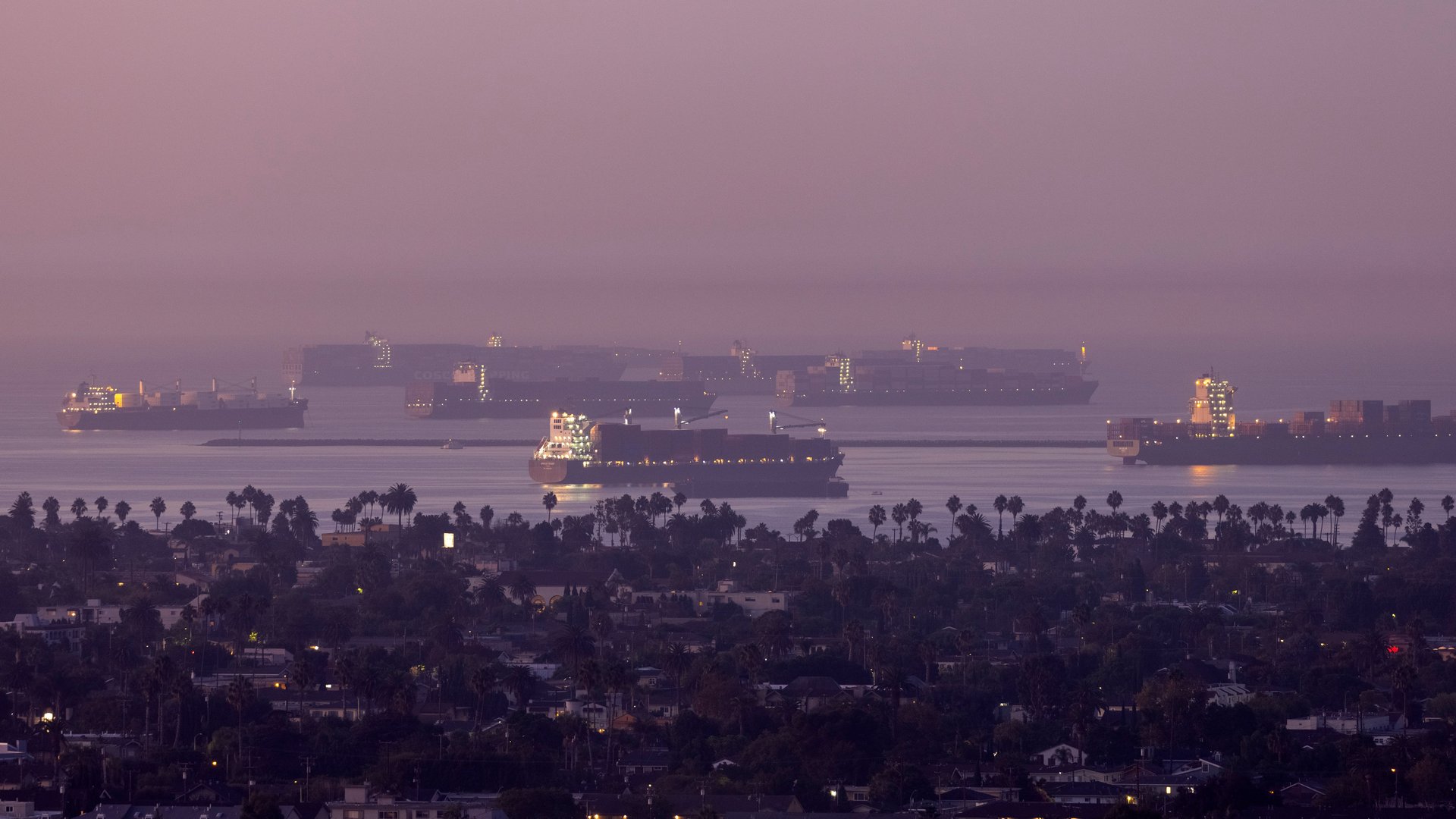What the shipping supply-chain crunch looks like from space
One of the biggest stories in the global economy right now are the hinks and hiccups in the vast infrastructure humans use to convey goods around the planet. Fittingly enough, the best way to understand logistical activity stretching around the globe is from space.


One of the biggest stories in the global economy right now are the hinks and hiccups in the vast infrastructure humans use to convey goods around the planet. Fittingly enough, the best way to understand logistical activity stretching around the globe is from space.
The pandemic recession and recovery has seen a major shipping crunch, with public health restrictions slowing activity in ports and at factories, even as fluctuations in the demand for durable goods, first plunging then soaring, have cracked through the economy with a bullwhip effect. Delays have been exacerbated by just-in-time strategies that keep inventories and costs low, but leave retailers and manufacturers with empty hands if there’s a significant interruption.
“The real problem here is uncertainty,” Fordham professor Matthew Hockenberry wrote in a Twitter thread laying out why things have become so congested. “After all, logistical time isn’t fast, or slow. It doesn’t actually matter how long a container ship takes, or how much product is on hand. What matters is that you can predict it. Logistical time is regular, routinized.”
One source of uncertainty for the people charged with predicting supply chain outcomes has been a lack of data. Shipping companies and ports tend to rely on human data entry, which is prone to errors and delay, according to Gavin Webber, the chief product officer at the firm Gravity Supply Chain. His company uses data from Spire Global, a satellite data company that uses orbital sensors to gather data about activity on Earth, including collecting the location of ships, which are broadcast by onboard radio transponders. The company, which went public in August after being acquired by a special-purpose acquisition company, also agreed to purchase a competing maritime surveillance company, exactEarth, in a $161 million cash-and-stock deal earlier this month.
“Spire’s data essentially allows our users to capture visibility of a more accurate time of arrival than what else is provided by other means,” Webber says.
What shippers can do with more accurate ETAs
During normal times, that data helps companies make smarter decisions about ordering, and can help them avoid paying fees for storing containers of goods at ports. Once ships are back in the open ocean, Spire can help them in other ways. The shipping industry is interested in developing better risk-based models of how weather affects marine supply chains, and Webber says Spire’s satellites, which also gather weather data, could help generate a more accurate ETA for his customers, which range from logistics firms to wholesalers and manufacturers.
Now, though, it is helping them document their frustration. The carrier may tell them that the ship with their container on it has arrived at, say, the Port of Los Angeles. Spire can tell them that it is 30 miles off the coast and has been waiting to berth; a sample of the company’s data from the Port of Los Angeles found an average wait time of six days for container ships there last week. The company shared a visualization of activity at the Ports of Los Angeles and Long Beach, the busiest area for container shipping in the United States, from Aug. 17 to Sept. 17, with ships arriving and then waiting offshore for the opportunity to unload.
Webber says he watched over the summer as the buildup at Los Angeles, the busiest port in the US, spread up and down the coast, with some ships heading to Mexico, where their goods can be trucked to the US, and others stacking up at northern ports like Oakland or Seattle.
The problems we’re seeing in the supply chain are unlikely to go away until at least midway through next year, Webber says, but his firm is already working on new ways to incorporate space data into their platform. “Utopia really is the ability to tell our users at any given moment where a container or goods are, and the expected arrival date at their final location,” he explains.
What will that take? With ports now the weak link in the chain of data, it might mean putting connected sensors into containers themselves. That’s too pricey at the moment, according to Webber, but if ports cannot figure out how to do this themselves (and they may not have the resources or even the incentive), third-party providers like Spire might be able to. The company just announced a partnership with Myriota, the internet of things company, to monitor its various sensors from space.
“If that price point came down, it would be undeniable,” Webber says. “From a data perspective? Jackpot.”
A version of this story was originally published in Quartz’s Space Business newsletter.